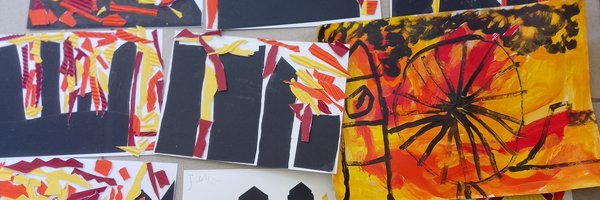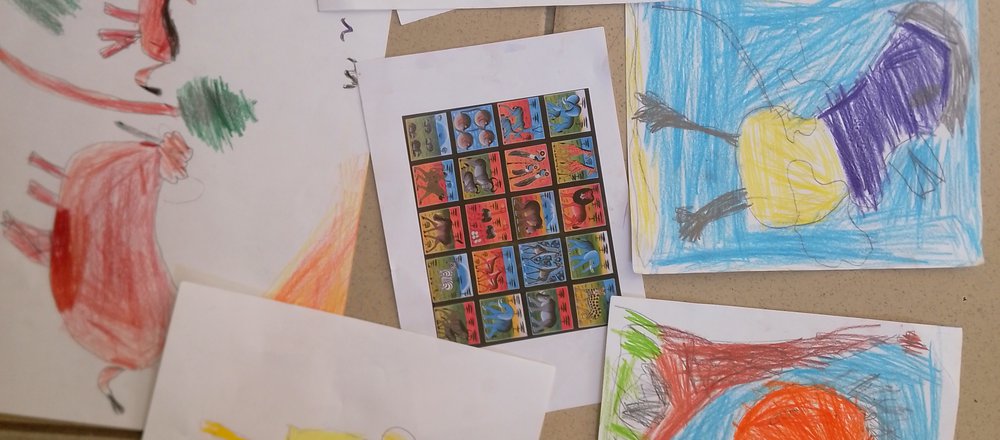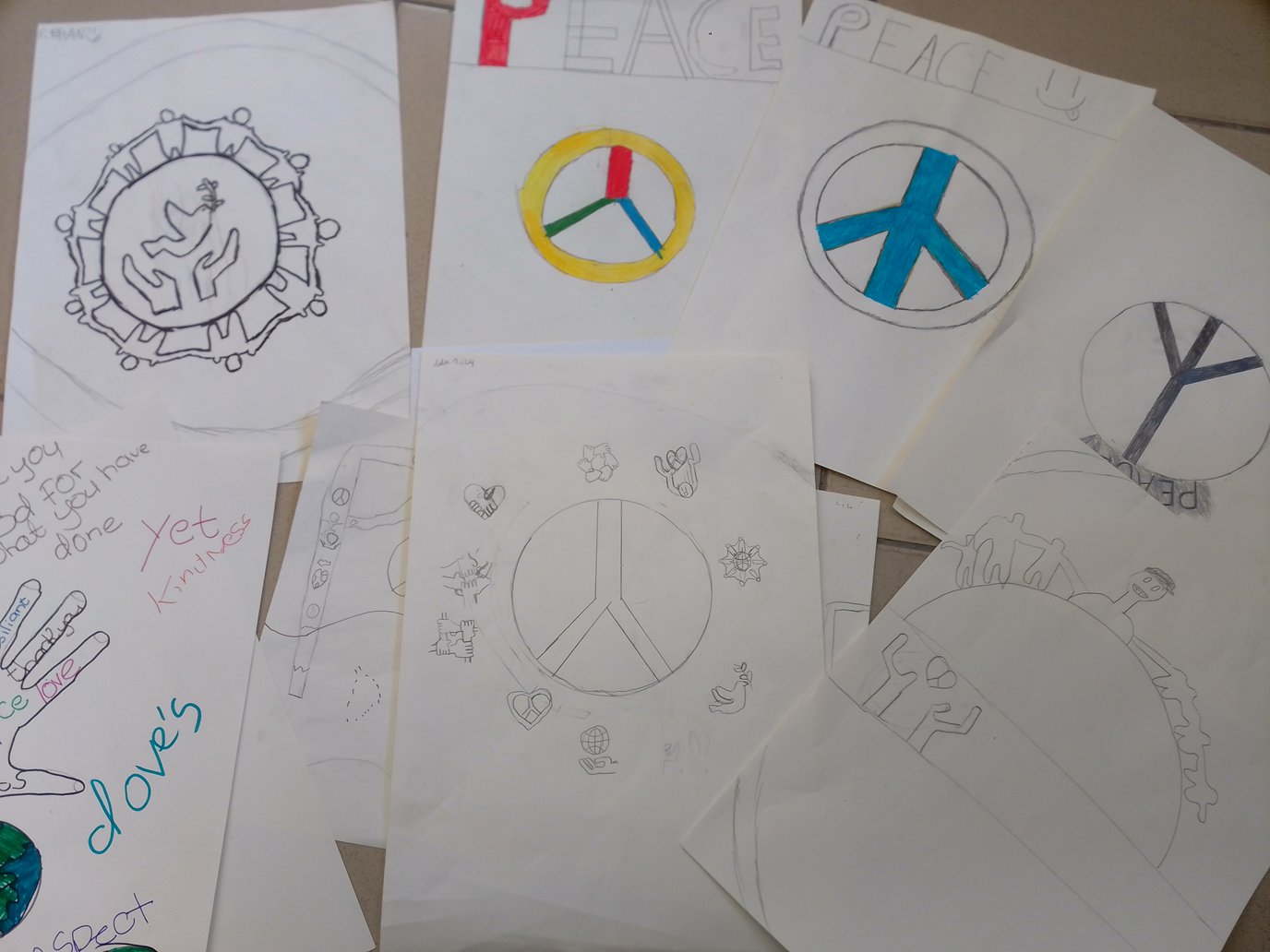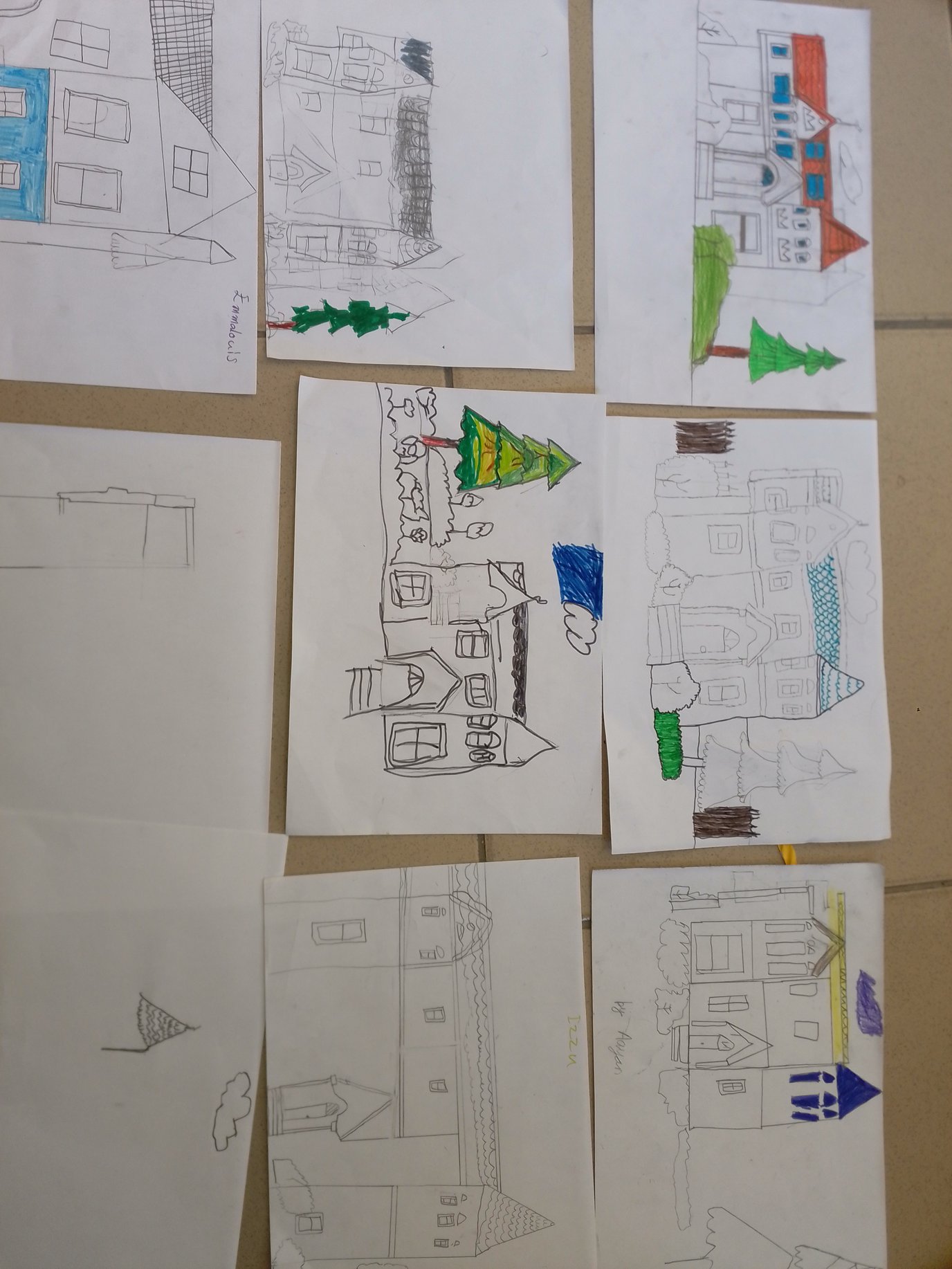
Primary Art

15th June 2024
Year 1
Learners have been studying Edward Tingatinga’s style of painting. Tinga Tinga painting began with Edward Saidi Tingatinga, who was born in 1937 to a family of subsistence farmers in southern Tanzania. In 1953 he travelled to Dar-es-Salaam in search of work and laboured at odd jobs in the construction industry until 1961. Impressed by the ease with which western style paintings by Zairian artists sold to tourists he decided to try his hand as a painter.
Year 2
The Great Fire Of London art; Children made several artworks on the Great Fire of London. They made one using paint and another using paper cut outs, glue and scissors. In the painting task, students learnt how to use yellow, orange and red to create the fire effect on a piece of A3 paper. They then added illustrations of burning buildings using black paint.
Year 3
Students are learning what architecture is, and some of the common characteristics found within the Victorian architectural style (Gables, bay windows, fish-scale shingles, turrets, towers, front porches, gingerbread details, multiple chimneys to name a few). They are currently creating a drawing of their own Victorian style house that includes some of those elements. We are also reviewing the elements of Art and how students would be utilising 6 out of the 7 elements of art to draw their homes; Line, Shape, Colour, Space, Texture, and Value. Studentswill also make the connection between art and maths since we will be talking about acute and obtuse angles for the gables, as well as using rulers to draw any straight lines.
Year 4
Art was an important part of Aztec life. They used some forms of art such as music, poetry, and sculpture to honour and praise their gods. Other forms of art, such as jewellery and feather-work, were worn by the Aztec nobility to set them apart from the commoners. Students have been making abstract art using dry and/or wet media inspired by the Aztec symbols.
Year 5
World Oceans Day reminds every one of the major role the oceans have in everyday life. They are the lungs of our Planet and a major source of food and medicine and a critical part of the biosphere. The purpose of the Day is to inform the public of the impact of human actions on the ocean, develop a worldwide movement of citizens for the ocean, and mobilise and unite the world’s population on a project for the sustainable management of the world's oceans. Students were tasked to make a poster targeting EYU, KS1 and Lower KS2 pupils to create awareness about the day.
Year 6
Creating peace posters gives children the chance to express their visions of peace and inspire the world through art and creativity. Students are presently investigating this theme while exploring a variety of media art making techniques.












